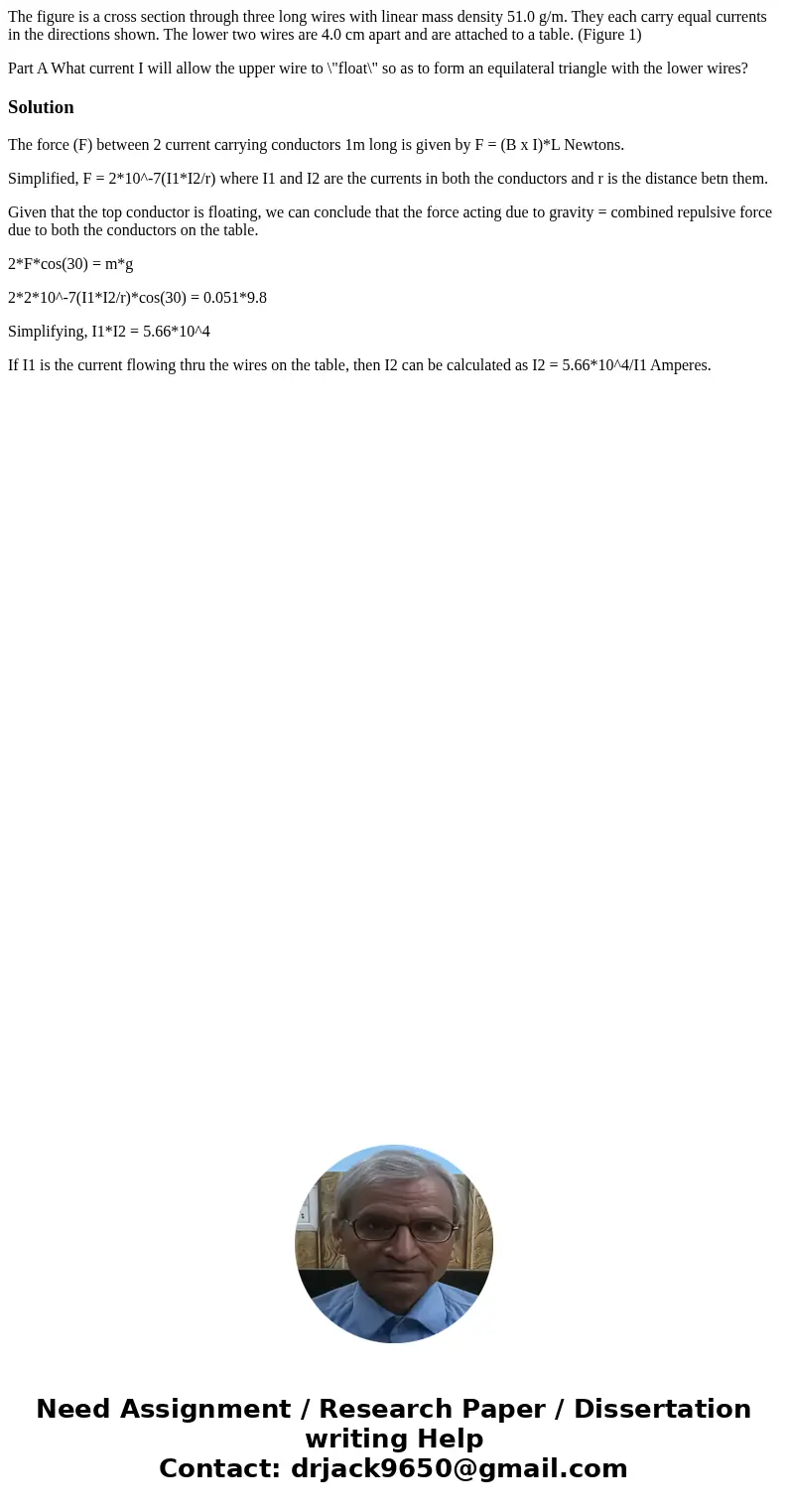The figure is a cross section through three long wires with
The figure is a cross section through three long wires with linear mass density 51.0 g/m. They each carry equal currents in the directions shown. The lower two wires are 4.0 cm apart and are attached to a table. (Figure 1)
Part A What current I will allow the upper wire to \"float\" so as to form an equilateral triangle with the lower wires?
Solution
The force (F) between 2 current carrying conductors 1m long is given by F = (B x I)*L Newtons.
Simplified, F = 2*10^-7(I1*I2/r) where I1 and I2 are the currents in both the conductors and r is the distance betn them.
Given that the top conductor is floating, we can conclude that the force acting due to gravity = combined repulsive force due to both the conductors on the table.
2*F*cos(30) = m*g
2*2*10^-7(I1*I2/r)*cos(30) = 0.051*9.8
Simplifying, I1*I2 = 5.66*10^4
If I1 is the current flowing thru the wires on the table, then I2 can be calculated as I2 = 5.66*10^4/I1 Amperes.

 Homework Sourse
Homework Sourse